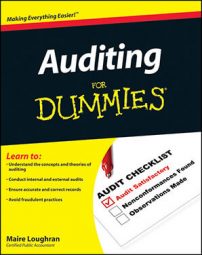During an audit, testing payroll transactions includes sniffing out employees paid who shouldn’t have been and making sure valid employees are paid the correct amount. Auditors also need to make sure the payroll transactions are reflected in the correct financial statement accounts.
During your audit, you need to test management financial statement assertions. For payroll expense transactions test these five assertions:
Occurrence: Occurrence tests if the payment transactions actually took place. Check that payroll expenses and payroll tax expenses the company records are for employees who exist and work during the pay period. Also, all accrued payroll and payroll tax liability balances should represent amounts the company owes at the date of the balance sheet.
To test this assertion, you regularly perform two procedures:
Testing for terminated employees: To make sure no terminated employees are being paid, select a sample of the client’s terminated employees and trace them back to the payroll register.
Verifying new employee information: Select a sample of employees hired in the year under audit. Review the personnel file and make sure each new employee has appropriate documentation according to the audit client’s human resources procedure and policy manual.
Completeness: In the payroll process, understatement isn’t a major concern because most employees will notify employers if they don’t get a paycheck. Regardless, you do need to perform some testing to make sure the audit client isn’t understating payroll expense.
Test the completeness assertion by securing a list of current employees from human resources. Select a sample of current employees and trace them to the payroll register, making sure each current employee has been paid.
Authorization: This step addresses whether your audit client management and staff follow proper internal control or other company authorization procedures when handling payroll transactions. You need to make sure that personnel file updates and time sheets have proper authorization.
To test authorizations for both, select a sample of employees from the payroll register. Inspect time sheets, checking that an appropriate level of management approves hours for which the employee is paid. Trace employees back to their personnel file to make sure the facts reflecting in the payroll register are the same as in the personnel folder. These facts include both rate of pay and appropriate payroll deductions.
Accuracy: Testing accuracy addresses whether transactions are free from error. For payroll, you must check the amount paid and account classifications to make sure they’re correct.
Cutoff: Clients may try to move accounting transactions from one year to another to show more positive results. Your job as an auditor is to have reasonable assurance the company records all payroll-related transactions when they are incurred. The best way to check for proper cutoffs is to test accruals.

